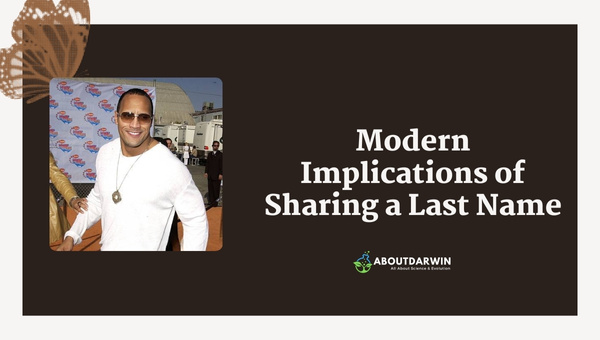Physical Address
304 North Cardinal St.
Dorchester Center, MA 02124
Have you ever bumped into someone who has the same last name as yours and thought, “Hey, could we be some sort of family?” The simple answer is: that it’s complicated. Last names can be like clues that lead to your family’s story. Sometimes they tell you that you are related, and other times they are just coincidences.
When people have the same last name, it does not always mean they are part of the same family. A common surname could come from many places – maybe from an old job like “Smith” or from a place like “Hill.”
People long ago started to use these words as last names so others could know more about them before they even met. So if your last name is popular or comes from a job or place, there may be many people with that name who are not related to you at all.
What You Will Discover Here
Contents [hide]
Surnames, commonly referred to as last names or family names, carry a rich history dating back many centuries. They help in identifying one’s lineage or ancestral roots.

Historically, surnames were adopted to distinguish two people of the same first name, represent an individual’s profession, denote a person’s place of birth or residence, or mark a personal characteristic.
The genesis and progression of surnames have been an eventful journey. Initially, in ancient times, people were known by just a single name but as populations grew this practice became insufficient. Therefore, extra descriptions started being added to these single names to differentiate individuals which eventually evolved into surnames.
In many cultures around the world like European and Asian societies, surnames began gaining popularity in the Middle Ages between the 10th and 12th centuries. It is interesting to note that the evolution of these names has been greatly influenced by social structure changes over time.
In earlier society structures where feudalism was prevalent with lords and serfs, the surname was often derived from one’s land holdings or occupation. This system gave way with growth in trade and commerce as middle classes emerged leading to a broader variety of surnames based on craftsman’s trade such as “Smith”, “Baker”, “Carpenter” etc.
Surname patterns also hold significant importance in understanding social histories across cultures worldwide. Some common types include Patronymic (about the father’s name), Metronymic (related mother’s name), Toponymic (reflecting geographical location), and Occupational (revealing the person’s profession) among others.
Patronymics are quite prevalent even today, especially in countries like Iceland where a child’s surname is formed by taking the father’s first name followed by ‘son’ for boys or ‘dottir’ for girls indicating ‘son of’ or ‘daughter of’.
This practice represents strong patriarchal influences in societal structures. Metronymics, on the other hand, have been historically lesser used and reflect matriarchal influences.
Toponymics denote an ancestral geographical location where an individual or their ancestors originated from such as “Hills”, “Rivers”, and “Fields” among many others pointing towards association with nature.
Occupational names can offer a glimpse into past societies and duties served – like “Miller”, symbolizing one who works with mills, has been a common name in English societies.
Also Read: Salmonella Shigella (SS) Agar: Purpose, Principles and Uses
Cultural influences greatly affect the formation, development, and allotment of surnames. Different cultures have unique traditions that dictate how surnames are created or carried through families.
Understanding these cultural variations can sometimes explain why two people with the same last name may not necessarily be related.
Across various cultures around the world, naming conventions can differ significantly, which affects surname similarities:
Also Read: Simmons Citrate Agar: A Deep-Dive into Composition & Uses
In exploring the connections between individuals with the same last name, it is crucial to dive into the discipline of genealogy and acknowledge its importance in detailing familial links.
However, tracing ancestry isn’t a straightforward endeavor; it involves overcoming various challenges due in part to the commonality or dissemination of certain surnames over time.
With the changing times, having a shared surname has not just been about societal or historical constructs. Presently, it comes with its own set of challenges and opportunities for individuals. Two main areas heavily influenced are identity-related issues and genetic research.

Sharing a surname can sometimes be accompanied by complications in various areas, such as legal contexts or credit reporting. Some potential implications include:
Various agencies take due care today to ensure that this does not happen, but the risk remains higher for those sharing common surnames.
Also Read: Mueller Hinton Agar (MHA) Composition, Principle and Uses
Contrary to traditional methods relying on documented evidence like birth records, marriage licenses, etc., modern science offers more accurate options for determining family ties among those having shared surnames – DNA testing.
Some key aspects regarding DNA testing for establishing relationships include:
Understanding your ancestry through DNA testing could provide an intriguing exploration into your familial past, especially if you possess a common last name – potentially revealing unexpected connections with diverse cultures or lineages.
Also Read: Unraveling Potato Dextrose Agar (PDA): Principle & More
Not necessarily. Although a shared surname may suggest a familial connection, it is not definitive proof of kinship.
There’s not a universal percentage since it greatly depends on factors like the commonality and geographical distribution of the surname, as well as migration patterns.
Variations in spelling often occur due to transcription errors, translation across languages, or change over time.
Some ways include conducting genealogy research or taking a DNA test to confirm any possible relationship.
This article has delved into the intriguing topic of whether sharing a last name necessarily indicates familial relations. We’ve found that this is not always the case due to historical, cultural, and genealogical circumstances.
Surnames originated from diverse sources, often denoting occupation or lineage, and their evolution over time created situations where unrelated families now share common last names. Cultural variations further influence naming conventions globally.